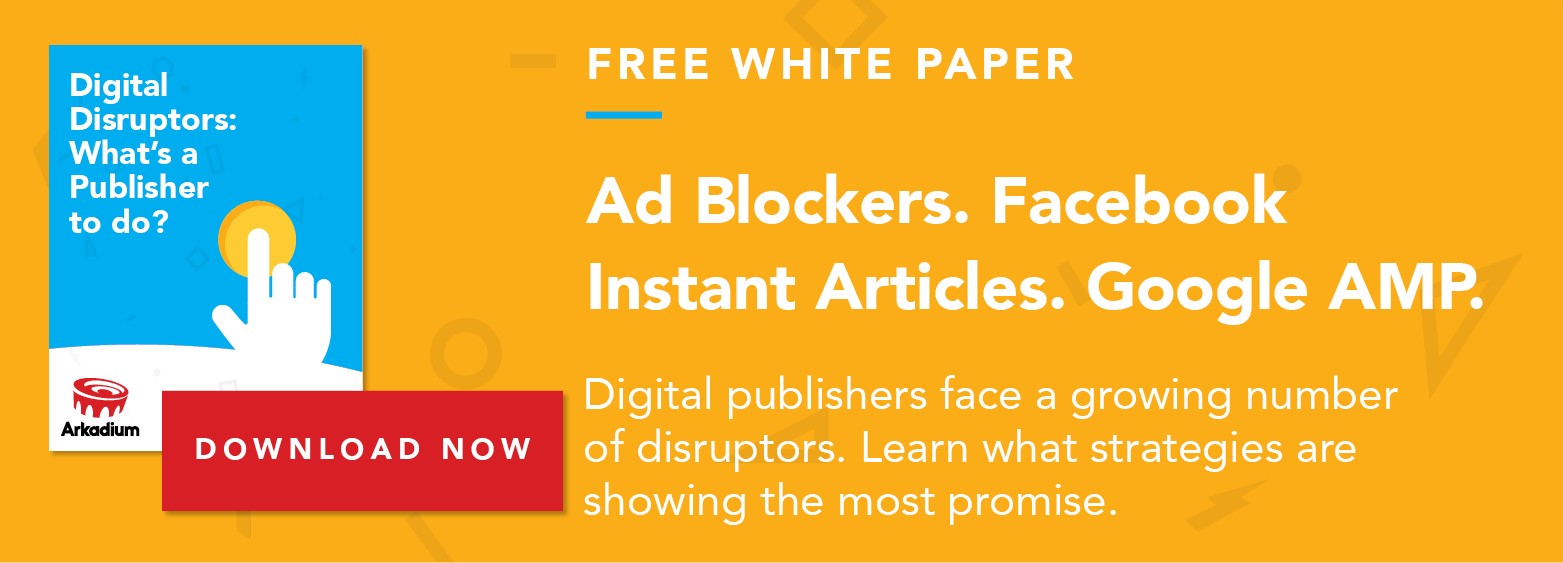How to Prepare for Digital Publishing’s Future Disruptors

What do mirrors, watches, and drones have in common?
They are all future disruptors of the digital publishing world. Indeed, these new smart technologies are taking hold and are bound to change the way users consume and interact with content. Here’s what you need to know.
Watches and Mirrors
Smart technology has been in the lexicon ever since Google announced Google Glass in April 2012.
In the four years since Google Glass, countless other accessories have been developed including smart watches, rings and bracelets. With 12 million Apple Watches sold in 2015, publishers are jumping at the chance to develop wearable friendly apps.1 Case in point, The New York Times ‘The Watch’ app which reaches roughly 15 million devices.2
This concept has been taken a step further with the introduction of the smart mirror, a mirror which displays news updates along with the weather, calendar, and much more. With planned news and publisher integrations, the smart mirror will provide valuable opportunities as a new content distribution channel.
Perseus Mirrors, a privately held company founded in 2015, is one of the leaders in the up-and-coming smart mirror market.3
Erik Skantze, Perseus’ CEO explains, “People, on average, spend over 30 minutes in front of the mirror every day. We designed our mirror to make those 30 minutes as efficient and fun as possible so that users can leave their home feeling energetic, empowered, and ready to take on the day.”4
Smart mirrors also enable media personalization. As stated by Skantze, “We wanted to create an experience that would be customized to each individual user. One person might want to read up on the latest celebrity gossip, while another might want to see a video about the presidential election, and another may want to listen to R&B while getting ready. We need the flexibility to fit each of these needs. The possibilities are endless and this is just the beginning. We are going to change the way people start their day.”5
This could lead to higher engagement levels; a 2015 Evergage study showed that 73% of digital companies received an increase in user engagement with personalized content, including publishers.6
Learn 3 other reasons why digital publishers need to use content personalization.
Drones
Drones will take people somewhere they’ve never been before.
Michael Davies, svp of Field and Technical Operations at Fox Sports, says, “There are some shots that you simply can’t get with conventional means. You can get a lot lower and close to different structures and ground elements with drones.”7
Fox Sports found this to be true as it increased its usage of aerial drones to film live sports broadcasts, allowing viewers to grasp a better understanding of the environment and feel more connected.8
Drones are also beneficial for live streaming, which is a new digital publishing trend. Good Morning America used drones to film footage that could not be recorded with traditional filming tactics, such as taking a drone inside an active volcano, a Vietnam cave, a glacier, and the African safari.9
Outside of private events, the usage of drones has been legally questionable due to privacy concerns. Until recently, that is; as of June 21, 2016 guidelines from the FAA have been released allowing newsrooms to legally operate drones for journalistic purposes.10
As a result, many publishers are excited to experiment further.
Ben Kreimer, of BuzzFeed’s Open Lab for Journalism, Technology, and the Arts, exclaimed, “Agriculture, media, public infrastructure, examining bridges – there’s so much that drones can do. Which is why when it comes to journalism, my focus in on exploring the possibilities.”11
This exploration is not without purpose either.
Amir Malik, programmatic director of the Trinity Mirror, stated, “There’s a huge internal push within news publishers to the production of video content and to accompany every article, by principle, with a video.”12
Whether ‘drone journalism’ takes hold within 2016 following the release of the new guidelines or not, one thing is for certain: drones offer a new way to create engaging video content through unique aerial shots otherwise unobtainable.
Indeed, the industry’s future disruptors will very likely change the way publishers create content and users consume it.
1. Lamkin, Paul. “Apple Watch Sales Hit 12 Million in 2015.” Wareable. N.p., 09 Feb. 2016. Web. 15 Aug. 2016.
2. Zebian, Linda. “The Times Rolls Out One-Sentence Stories on Apple Watch.” The New York Times Company. N.p., 31 Mar. 2015. Web. 15 Aug. 2016.
3. Bowes, Ben. “Get Ready To See More Than Yourself In The Mirror.” Slice of Lime. N.p., 16 Jan. 2015. Web. 15 Aug. 2016.
4. “Wharton MBA Students to Release World’s First Consumer Smart-Mirror.” Rush PR News, 20 Jul. 2016.
5. IBID.
6. Trends & Priorities in Real-Time Personalization.” Evergage. Evergage, Dec. 2015. Web. 4 Apr. 2016.
7. Patel, Sahil. “Eye in the Sky: Fox Sports Is Brining Drones to Sporting Events.” Digiday, 3 Jun. 2016.
8. IBID.
9. Faw, Larissa. “Will Drones Fundamentally Change Advertising?” Media Post, 20 Jun. 2016.
10. Mullin, Benjamin. “Why 2016 Could Be a Breakout Year for Drone Journalism.” Poynter. N.p., 11 Jan. 2016. Web. 15 Aug. 2016.
11. IBID.
12. Davies, Jessica. “UK and US publishers agree: Video is where the money is.” Digiday, 4 Aug. 2016.


